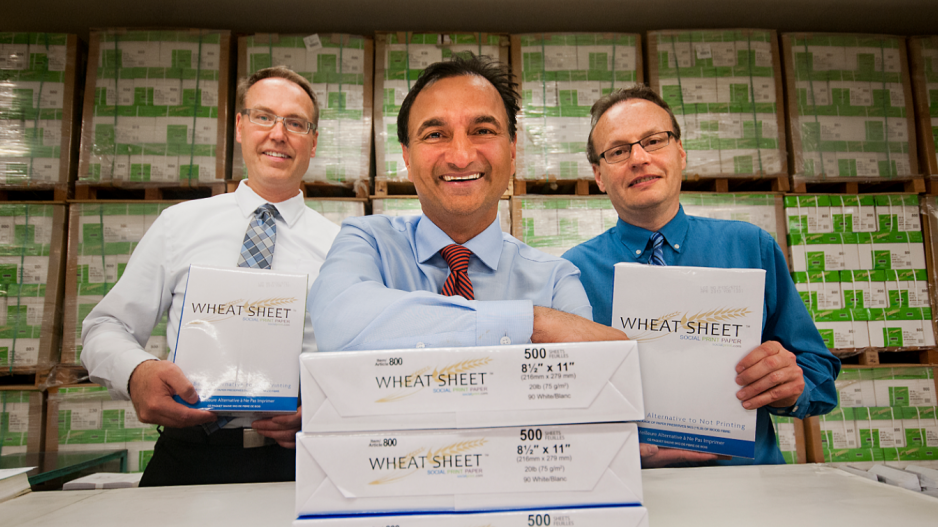A New Westminster, B.C., company is looking to bring to the western market an environmentally friendly paper designed to minimize wood fibre use and already commonplace in Asian countries with limited wood supplies.
Social Print Paper is an affiliate of Royal Printers, a family-owned commercial printing business founded in 1932. Social Print’s line of copy paper made from agricultural waste marks the first time the printer has entered the paper-production market.
According to Social Print’s senior partner, Minto Roy, paper made from the waste produced from wheat farming is already in use in countries such as India, but the paper is of a low quality. Roy explained that in order to bring agricultural paper to North America, his company’s product not only needs to be of the same quality that its clients are already used to, but also needs to have the same prices.
“[Royal Printers is] in an industry that’s notorious for being hard on the environment,” Roy said. “But going to the consumer and telling them, to get the added value of sustainability, they have to pay an extra 20 to 30%? We just saw no appetite for that.”
Social Print Paper is in partnership with the David Suzuki Foundation, which uses the company’s Wheat Sheet paper exclusively in its offices.
Social Print is working with a mill in northern India to produce the paper. Normally, the wheat straw waste used in the paper is left behind after harvesting and is then burned, so the environmental savings are twofold.
Canopy, a Canadian non-profit organization dedicated to protecting endangered forests, has long been campaigning for the switch to agricultural waste-based paper.
Canopy believes the straw from North American wheat production is enough to save 830 million trees each year.
The organization also maintains an ongoing market survey to gauge potential demand for non-wood-fibre papers, the results of which indicate there is enough of a market to keep five mills in operation in North America.
Roy explained that because there’s little precedent in Canada for making paper out of wheat straw, the costs of retrofitting existing milling equipment or setting up a new mill would make the company’s mandate of cost savings difficult. With increasing demand, however, Roy says the company is currently looking into moving some of the paper production to Canada.
Wheat Sheet is not made entirely from agricultural residue pulp. It contains 60% wheat straw fibres and 5% wood fibre from forests certified by the Forest Stewardship Council, and the rest is made of recycled plywood shavings.
Roy explained that the wood fibre is needed to maintain the structure and quality of the paper, but the company is researching ways to reduce its use or remove it entirely. The company is focused on securing distributors that work with clients such as universities and government agencies that use large amounts of paper.
“Our goal is to save half a million trees a year,” Roy said. “That goal will take about 75 to 100 containers of paper a month. We believe that goal is achievable.”



